Ever since Blackjack was introduced to the world as Twenty One, many things have changed in the game. Many variations are created and a lot of rules are changed. There is also a difference in how the British plays and how the Americans play it. Because of all these changes, a question arose which was “Does Dealer Hit on Soft 17?. Many blackjack players often overlook the soft 17 rule. However, it is one of the most important blackjack rules.
To play blackjack, one must first learn the history and regulations of the game. I’ve seen a lot of people play blackjack without understanding anything about the game other than the basic basics. It’s a good thing they’re playing blackjack rather than other casino games because blackjack has the smallest house advantage. However, if a player plays carelessly and without doing enough research, the edge they have in blackjack will be useless. Because unless you are really fortunate, playing without understanding will result in a loss.
You may have heard that blackjack is a basic game with straightforward rules. However, you should not take it for granted. Blackjack is much more than just hitting, standing, doubling, and splitting. Before you begin playing the professional Blackjack card game, you need to be familiar with a variety of methods, approaches, and movements. Soft 17 is one of the moves you must be familiar with. This play drastically increases the house advantage of the game, and the table may turn in the blink of an eye. Hence, pay close attention to everything we say in this book if you want to become a professional player and win even when your odds are little. Blackjack is arguably one of the few casino games where you can win even if you have terrible luck.
What is Soft 17 Rule?
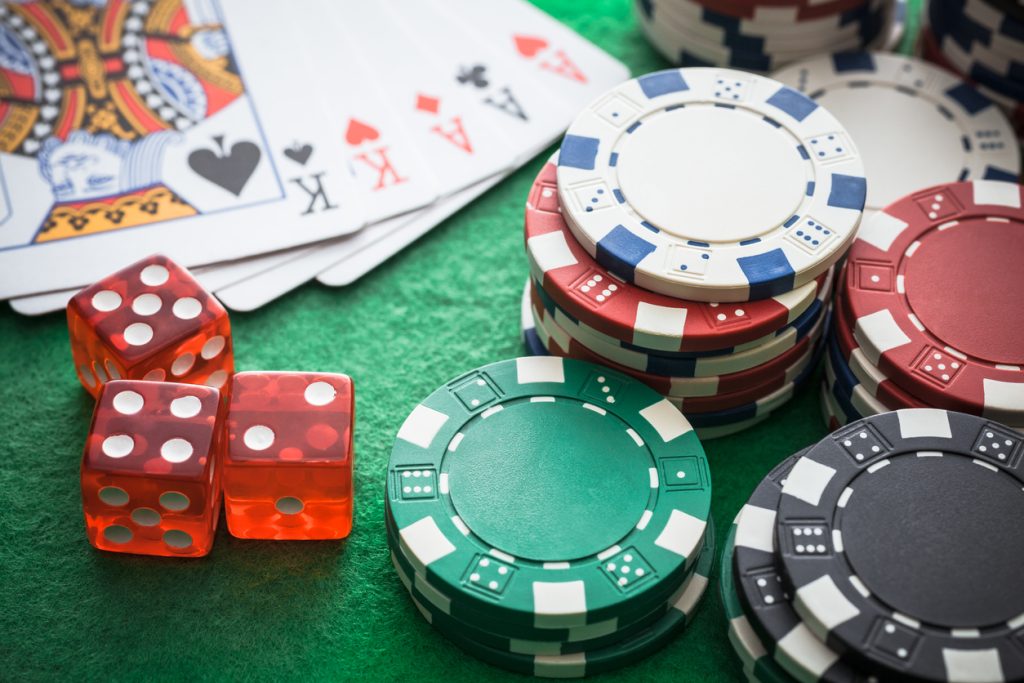
In casino blackjack, the “soft 17 rule” refers to how the dealer plays a hand with a total of soft 17 at a certain table at a specific casino. I’m sorry! I completely neglected to describe the soft 17 movements. Well, it’s not a very difficult or complex move, and it’s sometimes overlooked by players. Players ignore it mostly because, being a relatively new policy, there is little awareness of it among blackjack players. Some casinos adhere to it and make it a mandatory requirement, while others do not. There are also a few casinos that allow players to select whether or not to apply the soft 17 rule.
Now, let us explain to you clearly what this troublesome and confusing soft 17 is. I am assuming you already know the card values which is part of the basics but if you do not let me give a brief explanation on how aces work. In the blackjack card game, the aces can either score you 11 points or a single point. The choice is up to you (player) and the dealer. If the dealer or the player chooses the ace as 11 and his other cards add up to a total of 17, then it is called the Soft 17.
To make things sound easier, a soft 17 is when the dealer’s total score of 17 includes an Ace which is counted as 11 points. Now there are many questions regarding what to do in a situation of a soft 17 and how to deal with it. There are many questions on how to play this hand accurately. “Should I stand on a soft 17”, “does a dealer hit on soft 17”, or “Should I hit on a Soft 17?” these question arises in every blackjack player’s mind.
Examples of Soft 17 in Blackjack
It is a little hard to explain without proper demonstration of the play. But, hopefully, you will understand once you see some examples and finish reading the whole guide. Remember that a soft hand only happens if there is an ace in the hand. An ace can be either 1 or 11 so this means that the hand containing ace can be either one of two numbers. The players usually choose the number of points for an ace according to their game. Since it might be hard for you to understand the rule without examples. Here are some examples of a soft 17 in blackjack.
For the first example let’s analyze this scenario. So, the dealer distributes the initial cards to all players. One of the players gets an Ace and a 6. Now, the player gets a choice to either count his cards as either 7 (counting the Ace as 1) or 17 (counting the Ace as 11). If this particular player decides to count his cards as 17 with his Ace being of 11 points then it will be a Soft 17.
Assume the player has a soft 17 and decides to hit. Although 17 is a decent hand, it does not guarantee a win and is not as powerful as cards like 19, 20, or 21 (or, Blackjack.) As a result, some players may choose to hit a soft 17 instead. If a player strikes a soft 17 and the following card they receive is, say, a 7, they might reconsider their choice to credit the Ace as 11. Because 17 plus 11, 24 will bust the player, the overall score will be 14, which is more logical and favorable to the player. Note that the total score is 14 by counting the ace as 1.
Dealer Rules in Blackjack
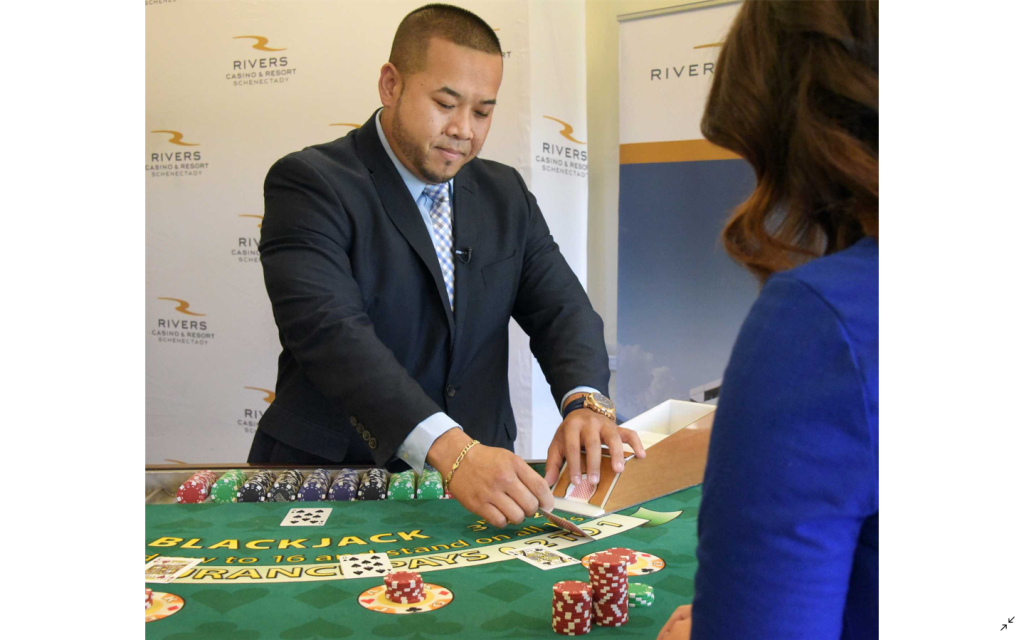
Dealers, like players, must follow rules. It is just as vital to study the dealer’s rules as it is to learn the player’s rules. We’ve included a set of dealer rules in this tutorial to ensure you fully grasp how the game works. Don’t worry, these are quite simple and straightforward. Learning these will not take much of your time and will provide you with a better grasp of how soft 17 works and whether or not a dealer must hit on Soft 17. If you aren’t interested in learning the rules or if you already know them, proceed to the next section. Let’s take a look at the dealer’s rules in Blackjack!
In Blackjack, the dealer is prohibited from giving you any advice or telling you what to do at all. Not even a single hint. If he does then the casino owners will fire him. The dealer’s opinions and thoughts have nothing to do with your Blackjack hand and you can play whatever move however you like. In contrast to the player’s rules, the dealer does not have much freedom in how to play their hand. They do not get to decide most of their moves because mostly casino leaders already decide how a dealer will play the hands. The experts prescribe procedures to dealers on how to play a certain hand.
The dealer’s moves are very limited especially because of the rule of thumb. This rule prevents the dealers from hitting after their total score reaches 17 or more. Certainly, the score can not be more than 21 or else the dealer will be bust or out. However, this rule does not specify whether a dealer hits on the soft number or not. Hence, the confusion about the soft 17 consumes more new players.
Does Dealer Hit on Soft 17?
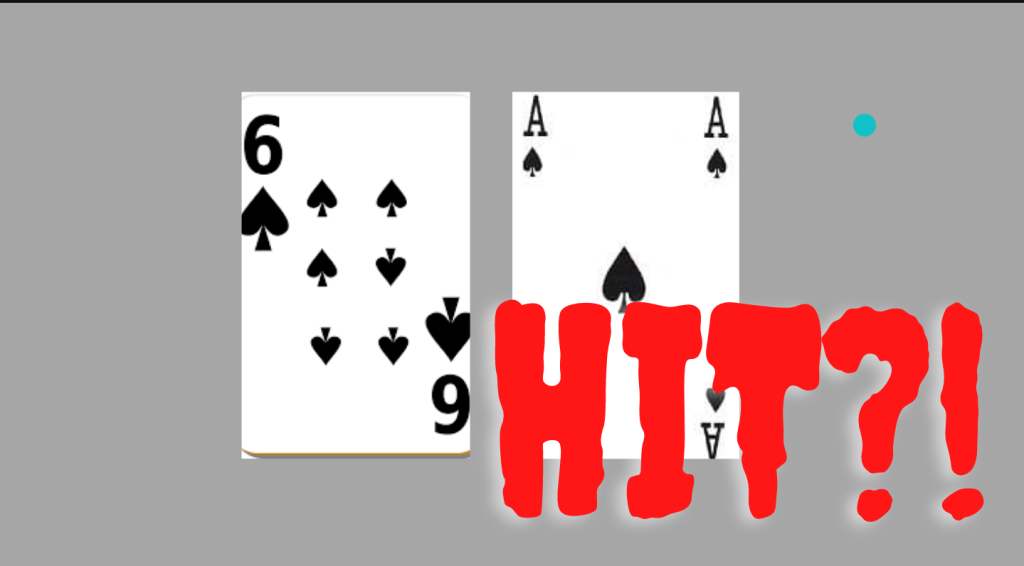
Many people ask if the dealer can hit on 17 because a soft 17 is when a hand consists of an Ace being 11 which can also be counted as 1 depending on the situation. Can a dealer hit on soft 17 by changing his decision to count the ace as 1 rather than 11 for a total score of 7? Or, does a dealer hit on soft 17? In simple words, yes the dealer does hit on a soft 17. Moreover, if the dealer hits on soft 17, the house edge increases by two-tenths.
There are plenty of such questions that arise in one’s thoughts. You may have similar concerns, which is why we’ve made this guide.
Since you’re here, you’re presumably familiar with common dealer guidelines like the rule of thumb. If you skipped it and have no idea, it is recommended that you read the prior section above about the dealer’s rules. The Rule of Thumb states that a dealer may not hit after a score of 17 or above. The rule, however, makes no mention of soft cards. Many casinos simply disregard the soft card restrictions and do not even enforce this policy. Some casinos, on the other hand, have the soft rule as a core regulation. In a casino that uses soft card policies, there is a lot of confusion about how individuals in casinos deal with such cards.
To be honest, there are numerous answers to this issue because of the wide range of casino policies. Some casinos allow the dealer to hit on a soft 17, while others do not. It is entirely dependent on the online or offline casino you are playing at. As a result, the best suggestion we can give is to ask the dealer whether the soft 17 rule is allowed or not.
How Does a Dealer Play Soft 17?
A dealer can play Soft 17 in a few different ways, depending on the casino’s rules. “How does a dealer play soft 17?” is one of the most common questions. Soft 17 gives the dealer a lot of options. On a soft 17, the dealer can even stand and hit. You’re probably wondering what happens if the dealer comes up with a soft 17. A dealer’s soft 17 hands is handled similarly to a player’s soft 17 hands.
Consider a blackjack game to get a better understanding of how it works. Assume the dealer’s first two cards total to a soft 17. The dealer has two cards: an Ace that he counts as 11 and a 6. We’ll call this a soft 17 hand because the ace is counted as 11. When a dealer with a soft 17 decides to hit, he can earn a score ranging from 18 to 21 or more than 21.
Imagine a situation when the dealer, holding an Ace and a six, decides to hit and receives a four. The dealer now has a total score of 21, which is the highest he can get after receiving a four. You can either push or surrender in this case. The key concern is what happens if a dealer strikes on a soft 17 and receives a card that raises his total score above 21. People usually assume the dealer will get busted, but guess what? The dealer does not get busted! Instead, he gets to lower the value of his Ace to a one. A dealer’s total score will be 15 if he hits on soft 17 and scores an 8. To keep the game in his favour, the dealer can adjust the value of his Ace!
Should You Hit on a Soft 17?
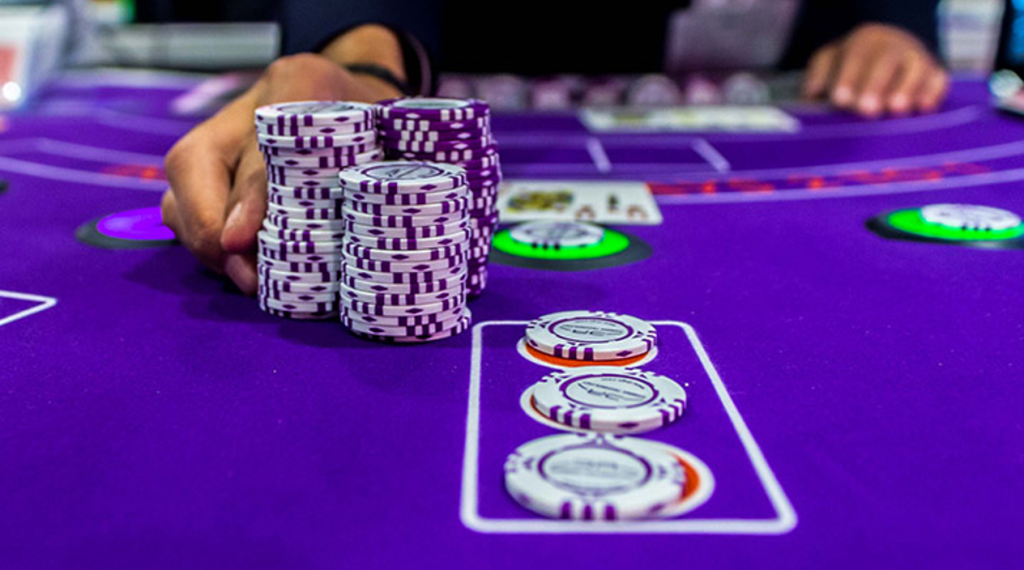
We now understand the dealer regulations, such as whether or not a dealer hits on a soft 17, and how a dealer plays soft 17. We’ve answered practically every essential question you might have. The only question now is whether or not YOU should take a soft 17 or not. So, let’s take care of this for you as well. Even if things vary depending on the strategy, we will strive to advise you on the most reasonable and logical path. What matters most in blackjack is that every action you make benefits you rather than the dealer. You must exercise extreme caution because a single blunder could result in you losing all of the money you have staked on your chips.
Returning to the original topic, “Should you hit on a Soft 17?” Yes, you should go ahead and do it. At the very least, countless Blackjack experts agree that hitting a soft 17 hand is preferable to standing. However, it is largely dependent on the method you are employing. Furthermore, if you want to assure your win, every action in Blackjack usually necessitates a mathematical calculation. And, if we apply some math to a soft 17 hand, we can see that standing will only reduce your odds of winning.
In all honesty, we have no way of knowing if you should hit on a soft 17 or not because we don’t know your plan. What strategy do you have in mind? Most crucially, we have no way of knowing if you have a multi-card soft hand or not. In almost every scenario, however, hitting on soft 17 is the best option. If you’re playing multi-card soft 17 hands, you must hit in that situation. It is your best option, and anything else will put you at a disadvantage or make things more difficult for you.
Best Strategy for Soft 17 Rule
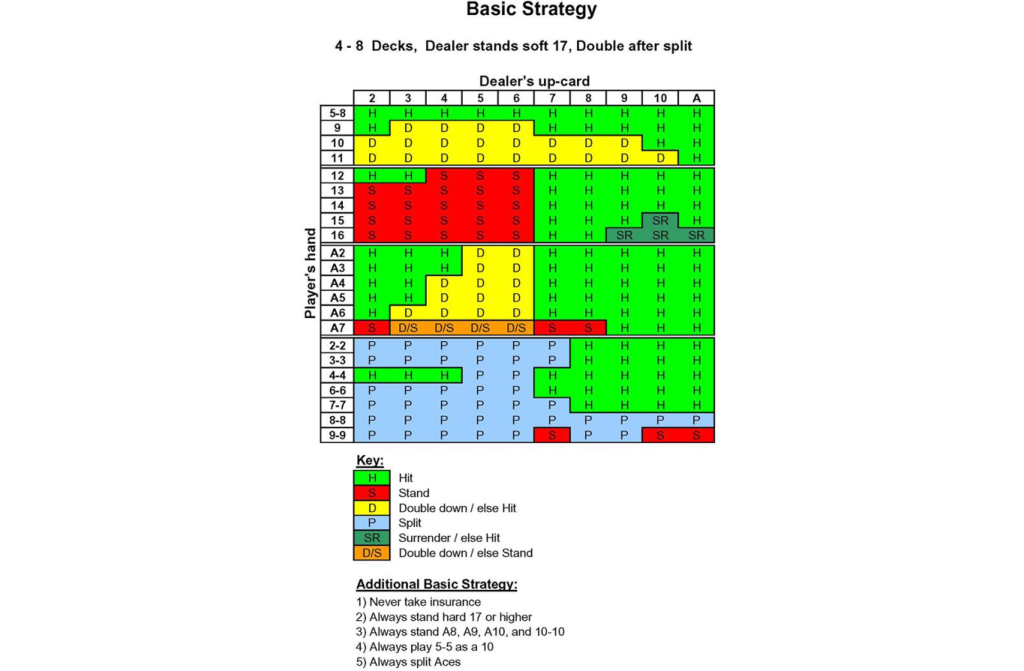
If you are playing the basic strategy, you will have to add some changes to your strategy upon forming a soft 17 hand. Basic strategy is the most commonly used strategy for Blackjack. Also, as a casino player especially a blackjack player, one should know how important it is to have a strategy while playing. While many would say that blackjack can be just won by mathematics, the truth is that blackjack has changed a lot over time. Learn about the changes in blackjack below.
Whenever you want to know how good a player is in Blackjack, just ask them what do they do or how do they change their strategy when they play soft 17 or soft 18. To play soft 17 and soft 18 properly, a player needs to make some changes to the basic strategy they are using. If a player follows their strategy with no alterations, they are more likely to commit a mistake that will lead them to lose the game. Hence, let us first learn the basic strategy for blackjack. And then, we will learn how to change our strategy according to soft 17.
The Basic Strategy for Blackjack
The Basic strategy of the Blackjack card game is the foundation to beat the game. Here, we will explain to you the easiest way to learn and understand the basic strategy. According to Blackjack experts, if a player does not know the basic strategy, they are never going to gain an edge in the blackjack card game. Playing the perfect basic strategy is the first step to beating the game of Blackjack. Let us tell you the main parts of the strategy in bullet points below.
Let us first discuss how to do the splits accurately to increase your odds of winning. You must remember and memorize these if you want to become a professional Blackjack player.
- Players should always split Aces and Eights in Blackjack’s basic strategy.
- Remember to never split tens and fives!
- You have to split twos, threes, and sevens against twos through seven in basic strategy.
- Split nine against two through nine, except for seven.
- Split sixes against two through six.
- And, split fours against five and six.
This is the simple version of the strategy you need to know. Now, let us learn what to do when we get soft 17 or soft 18.
Strategy for Soft 17
When the dealer hits on a soft 17, the basic strategy of the Blackjack card game varies slightly. However, keep in mind that you do not have to change and shift to a completely different strategy. Some of the doublings down parts of the strategy will go through significant changes.
If the dealer hits on a soft 17 and you have an ace, you will have to double down on an 11. Similarly, if you have a soft 19 and the dealer has a number close to 6, you should double down. Lastly, if the dealer has a 2, you’ll double down on a soft 18.
It’s also important to consider the number of hands and decks in play. If the dealer possesses an ace, you’ll also hit a soft 18 in a single-deck game. Moreover, it is recommended, according to the basic strategy, to double down on a soft 17 versus a dealer 2 in a game with four decks or more. When playing with a single deck, the basic strategy changes slightly, and players should hit a soft 18 hand if an ace is presented. If there is an Ace, they should also split a pair of 9s. If the game permits it, take this option with a hard 15 with a dealer Ace and a hard 17 with an Ace if the game allows it.
Hitting soft 17 allows the dealer to make the 18, 19, 20, and 21 hands, which can all win against a player’s pat hand on their own. When the dealer hits a soft 17 there are a few variants to the basic strategy: Against an ace, double down on 11, surrender 88, surrender 15 points and, surrender hard 17 as well.
Does a Dealer Hit on a Soft 18?
As I said earlier, knowing how to play soft 18 determines how good a player is in Blackjack. One has to know how to deal with these cards and situations to guarantee their win. If a person says that they usually stand at soft 18 or soft 17, understand that they do not know how to play even th3e basic strategy. Casino gamblers and Blackjack players treat soft 18 a lot like how they would treat a soft 17. Both are very similar in many aspects. Now, that we know that the dealer does hit on a soft 17, another similar question must be bugging your mind. That question would be does a dealer hit on a softy 18. Well, the answer to this is yes, the dealer does hit on a soft 18 too.
Dealer Hits on Soft 17 House Edge
When the dealer hits on a soft 17 in Blackjack a lot of things will change. The odds will go more in the house’s favor and your odds of winning will significantly decrease. If you are a basic strategy player, the house edge increases by 20% when the dealer hits on a soft 17. As you can see this is clearly a very big change in house edge. Hence, it is important to learn what to do when the dealer hits on a soft 17 or else you will have to face a loss. The only thing you can do as a basic strategy player is to surrender in such situations. You might be thinking that I am just exaggerating and how can the house edge increase this much. To clear all your doubts and question, let me show you the maths behind this.
Also, remember that increase in 20% of house edge does not mean that the chances of the house winning are 20% higher than yours. The house edge for Blackjack is around 0.5%. It is the 0.5% that will increase by 20%. In simple words, the total house edge will be around 0.7% higher than a player when a dealer hits on a soft 17. Most players are either unaware of this or don’t care; the advantage appears to be insignificant. However, putting it into context shows that this is not the case. When playing online you can choose to avail of offers like cocoa casino’s no deposit bonus codes.
A dealer, on the other hand, who stands on soft 17 is unable to improve the hand. This is significant because if a player has a hand of 17 or greater, the dealer’s only option is to push.
History of Changes in Blackjack
Casino games are continually evolving to meet the needs of new generations. They can be classic games with a new twist, or they can be new games with a new and interesting added element. Most of the time, though, these modifications are subtle and presented in such a way that the player is unaware of them. Blackjack is one of the games that has changed a lot throughout the years. In the early days of the casino gambling industry, blackjack was a game that guaranteed profit. However, the house’s advantage has grown with time.
The addition of multiple decks, 6-to-5 natural blackjack payouts, and compelling dealers to hit on a soft 17 are just a few of the new casino-friendly rules. In many circumstances, the casino’s house edge has risen to 2% as a result of this mix of rules. Other rule adjustments were made as well. The dealer can now hit on a Soft 17 total, and players can no longer double after a split, but the most significant change to the game was the increased amount of cards used. It not only enhanced income by reducing shuffle time but also raised the odds that the cards would be distributed more unpredictably, reducing the chances of a player winning the Blackjack game with the help of mathematics.
If someone tells you that the dealer does never hits on a soft 17, they are not wrong and just not aware of how the world of blackjack is changing with time. Although, it is true that some casinos still never let a player or dealer hit on a soft 17. However, the majority of casinos abide by the new policy that requires the dealer and player to hit on the soft 17. It is called the soft 17 rule.

